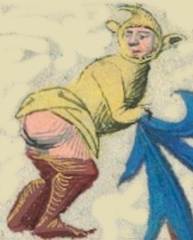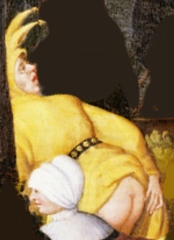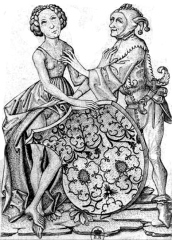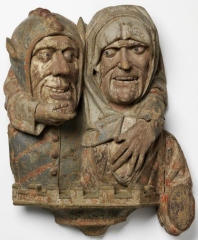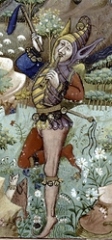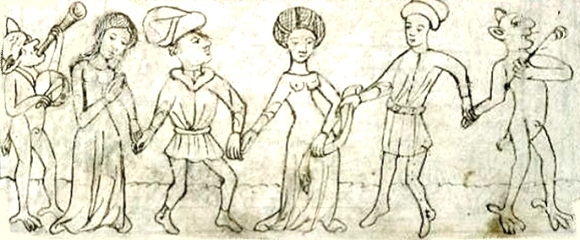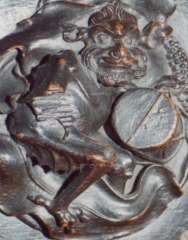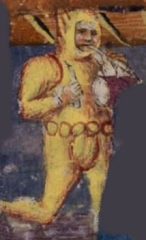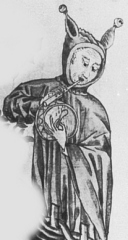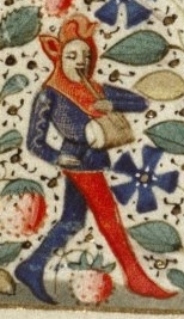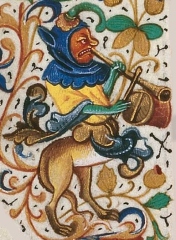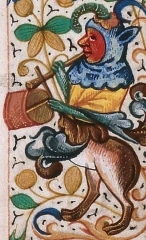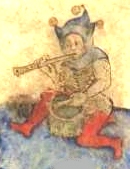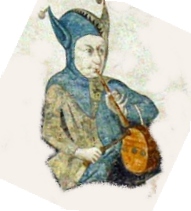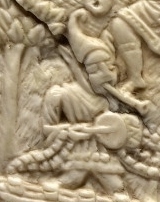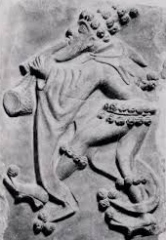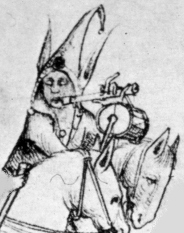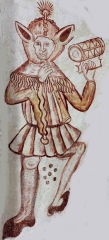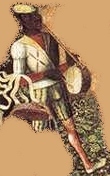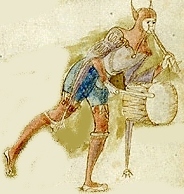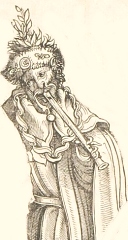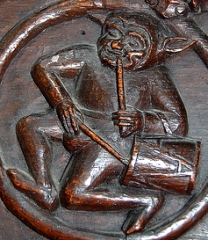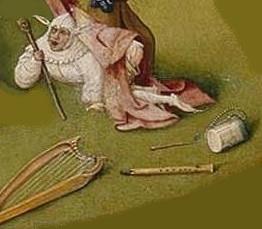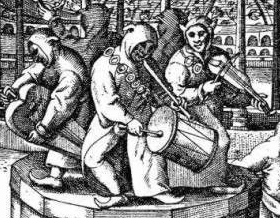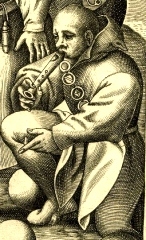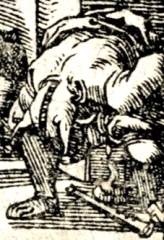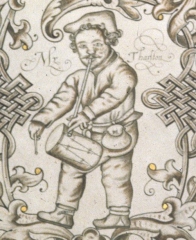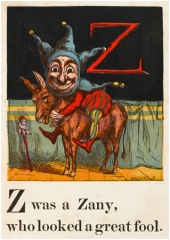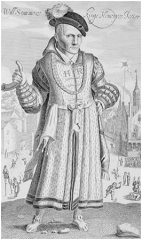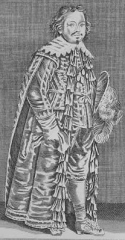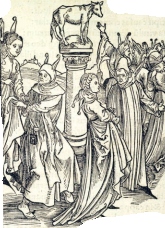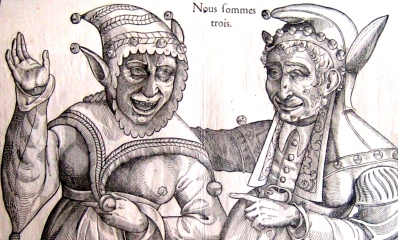forgotten traditions
fools, jesters and taborers
Books have been written about the symbolism of bald heads, court fools and jesters, jesters who were entertainers and minstrels and the significance of asses ears on hoods. Most fools and jesters were men. I have included the few women jesters that I have found on the internet for balance. King's 'fools' fell into one of two categories; those that were simple and needed looking after and the clever, witty ones who lived on their quips. There is evidence that the fool existed in medieval England in the surviving accounts of Hirard, the jester for the Saxon King Edmund Ironsides (referred to as a joculator) as well as Rahere, who was Henry I’s jester and referred to as a minstrel. There is some doubt as to whether English fools actually wore the earred hoods, bells and parti-coloured clothes or whether they were used as symbols that people would understand. As yet there is no trace in early contemporary records and few images. Foolishness is symbolized by the jester. Fools were thought of as low status, untrustworthy, clumsy and stupid. There was a long European tradition of satirical works on fools going back to the twelfth century, and the word fool had, at the time, an underlying Christian religious meaning of sinner, unbeliever, backslider. The root of the word "fool" is from the Latin follis, which means "bag of wind" or that which contains air or breath. |
||||||||||||||||||||||||||||||||||||||
|
||||||||||||||||||||||||||||||||||||||
|
||||||||||||||||||||||||||||||||||||||
|
||||||||||||||||||||||||||||||||||||||
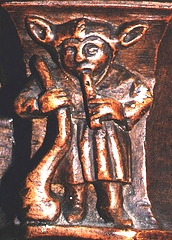 12th century misericord 12th century misericord Alsace, France |
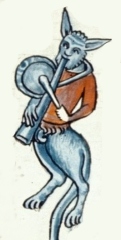 1275-1325 1275-1325 Toulouse, France |
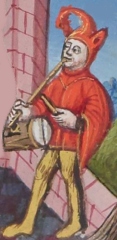 15th century France 15th century France |
||||||||||||||||||||||||||||||||||||
|
||||||||||||||||||||||||||||||||||||||
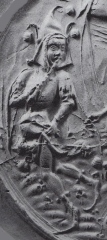 15th century Germany jester playing pipe 15th century Germany jester playing pipe |
jester playing pipe and bones |
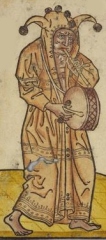 1450 Germany tarot card 1450 Germany tarot card |
One Tarot card character is Death. In the Middle Ages Death is often shown in Jester's garb because "The last laugh is reserved for death." Also, Death humbles everyone just as jesters make fun of everyone regardless of their standing in society. | |||||||||||||||||||||||||||||||||||
|
||||||||||||||||||||||||||||||||||||||
|
||||||||||||||||||||||||||||||||||||||
| Elizabethan fools: | ||||||||||||||||||||||||||||||||||||||
|
||||||||||||||||||||||||||||||||||||||
| In 2015, the town of Conwy in north Wales appointed Russel Erwood (aka Erwyd le Fol) as the official resident jester of the town and its people, a post that had been vacant since 1295. |
||||||||||||||||||||||||||||||||||||||
| Women jesters: | ||||||||||||||||||||||||||||||||||||||
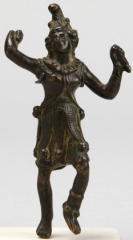 200AD female dancer 200AD female dancer with bells and coxcomb |
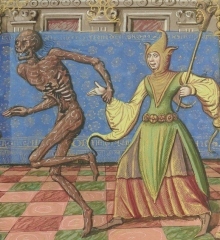 15th century woman jester 15th century woman jester |
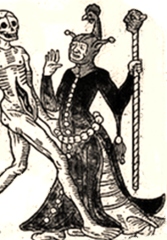 1491 Danse Macabre 1491 Danse Macabre |
|
|
||||||
 |
Jane the Fool was the jester of queens Catherine Parr and Mary I, and possibly also of Anne Boleyn (16th century England). After the Restoration Chales II did not reinstate the tradition of the court jester | 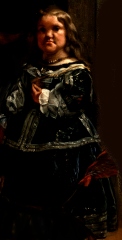 Maria Bárbola, from 1651 employed by the Spanish court Maria Bárbola, from 1651 employed by the Spanish court |
Mathurine was a jester for the French court during the reigns of Henry III, Henry IV, and Louis XIII (16th and 17th centuries). | |||
top of page
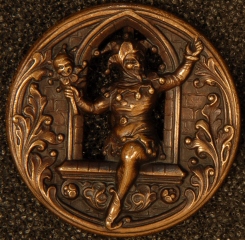 standard jester outfit on a button
standard jester outfit on a button 